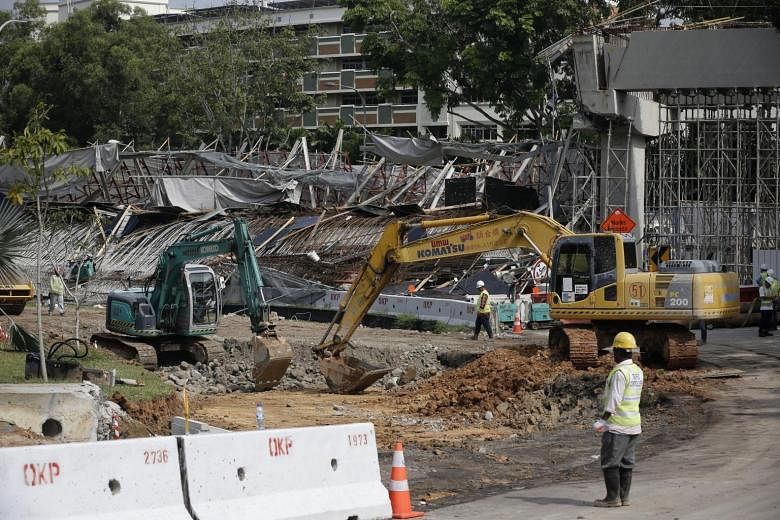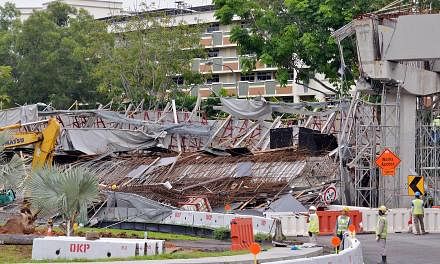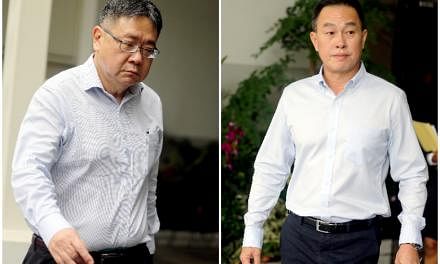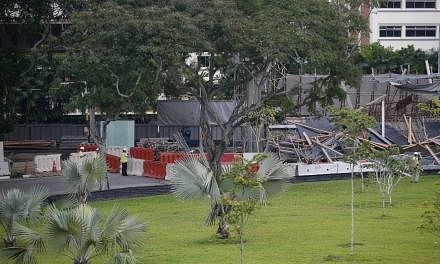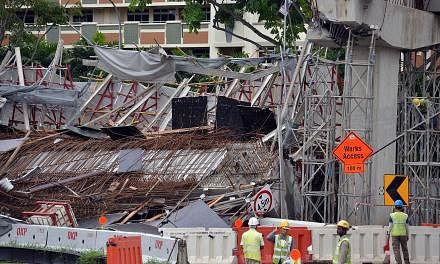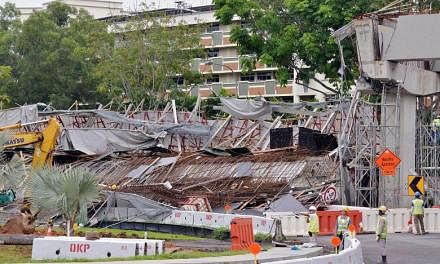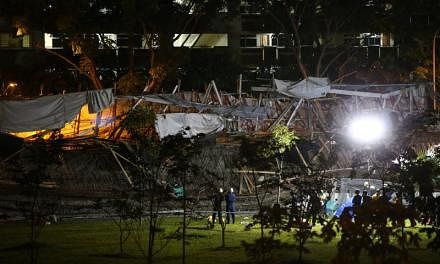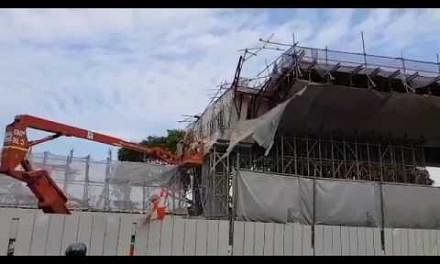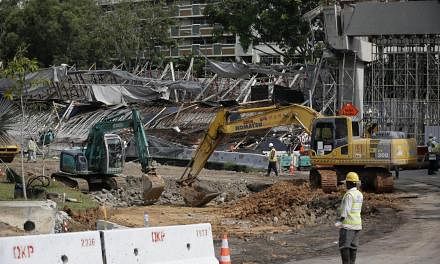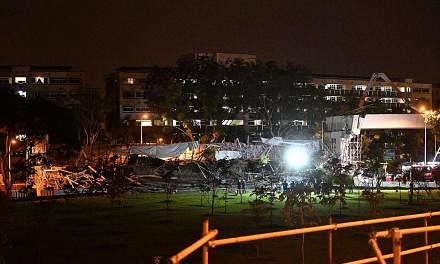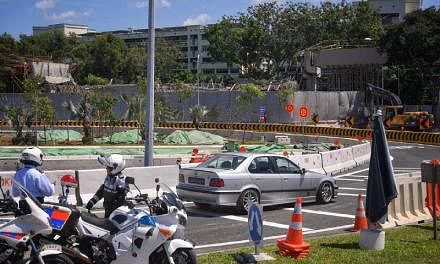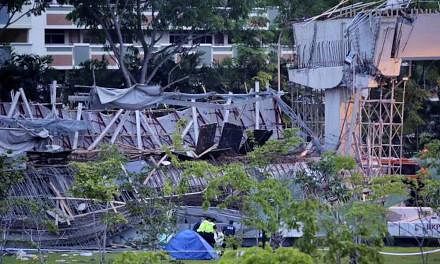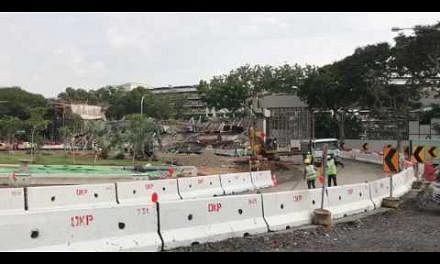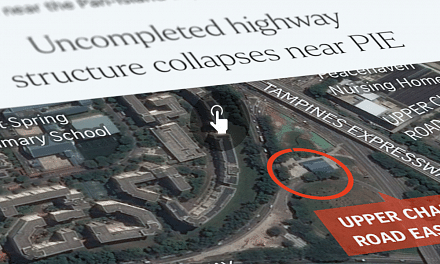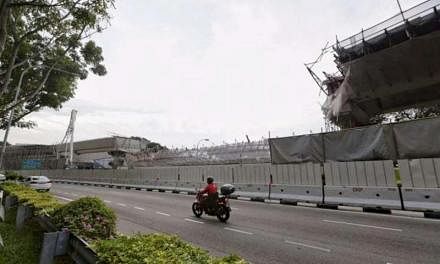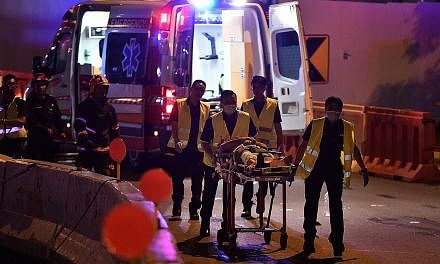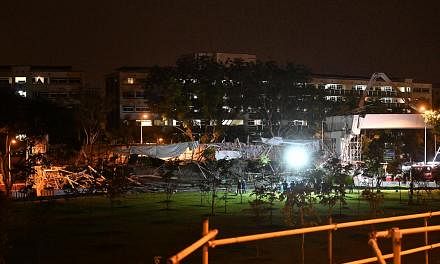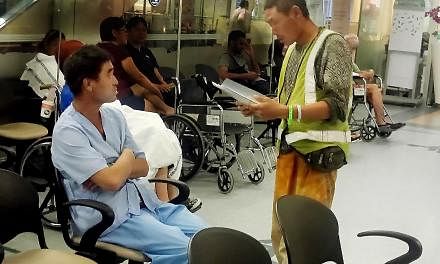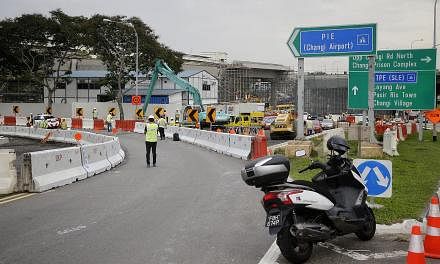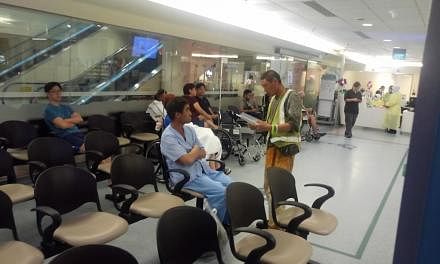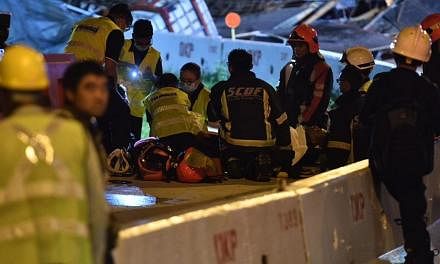Before any construction work can be done, all contractors, subcontractors, consultants and safety officers will soon need to attend a mandatory safety coordination meeting every day, The Straits Times understands.
All stakeholders in a construction site will be compelled to form a Project Safety Coordination Committee (PSCC), which will meet daily to discuss safety issues. While the need for site coordination is already part of the law, the current industry practice is for contractors to appoint a coordinator to do it.
A spokesman for the Ministry of Manpower said: "We will mandate the formation of a PSCC which aims to plan and coordinate all hazardous works at the worksite, in order to drive better onsite coordination, planning and communication.
"MOM is reviewing and will be able to share more at a later date."
Details of this move surfaced in the wake of the collapse of a 40m viaduct segment in Upper Changi Road East last Friday.
Speaking to The Straits Times on the sidelines of a Workplace Safety and Health (WSH) forum yesterday, Specialists Trade Alliance of Singapore president Nelson Tee said his association is finalising the recommendations for the PSCC. This is expected to be released in the third quarter of this year, he revealed.
-
Current safety checks in place
-
WORKPLACE RISK ASSESSMENT
Done by: Usually the main contractor. By law, all construction tasks must be evaluated for risks before workers can do them. These assessments must identify potential hazards and measures to control these risks, and the employer must be able to produce documents to show that these assessments and the recommendations are carried out.
TOOLBOX TALKS
Done by: Main contractor and sub-contractors. Every day, individual teams of workers, supervisors and safety officers typically attend these informal safety meetings to make sure everyone understands the risks involved in work that day.
PERMITS FOR HIGH-RISK ACTIVITIES
Done by: Main contractor. When sub-contractors embark on a high-risk activity, such as working at a height, they will have to apply for a permit to work from the main contractor, which will then assign a safety officer to supervise the work.
SITE INSPECTIONS
Done by: Regulators. Now and then, inspectors from the Ministry of Manpower may conduct surprise spot checks to detect any safety- related infractions.
STRUCTURAL CHECKS
Building Plans Submission
Done by: Project consultants. Building plans must be submitted by an appropriate qualified person (QP) - a professional engineer - to the Building and Construction Authority, which will approve the plans.
QP SUPERVISION
Done by: Project consultants. A separate team of supervisors, consisting of resident engineers and resident technical officers, will visit the work site before major works are done to make sure earlier work has been done to specification.
OVERSIGHT
Done by: Accredited checkers. Independently appointed by the client, checkers maintain oversight over the QPs by evaluating and reviewing their design plans to determine if they are adequate, redoing calculations if needed. They are obliged to notify the building authorities of any non-compliance.
Mr Tee said: "As part of a WSH initiative, the PSCC will help close the gaps in workplace safety today by bringing together all stakeholders in minimising misunderstandings and identifying potential safety challenges together."
The changes add to the existing layers of checks that ensure that construction processes here are safe and that the building is structurally sound.
ST understands that the investigation into the viaduct collapse, which is led by the Land Transport Authority (LTA), will look into how some of these checks were done.
Dr Goh Yang Miang, who chairs the health and safety engineering technical committee at The Institution of Engineers, Singapore, said he believes that "all duty holders involved" would likely be called up for the investigation.
This includes the main contractor Or Kim Peow Contractors, project consultants CPG Consultants and the accredited checkers that are appointed by the LTA.
All 11 casualties, including the one worker who was killed, were working for subcontractors.
Dr Goh said the accident shows that safety culture in the industry still requires more work.
"There are lessons to be learnt from each accident. My take is that there are many fundamental issues in the industry which are now surfacing in the form of accidents and low productivity," he said.
He added that these issues primarily involve staff competencies and the need to inculcate a mindset for safety.
Procurement practices, both by government agencies and private developers, are also another area of concern, he said. OKP had won the November 2015 LTA tender with a bid that was 27 per cent lower than the nearest competitor.
While the contractor has said that safety was not compromised, Dr Goh said budgets and time constraints can exert an effect on safety.
